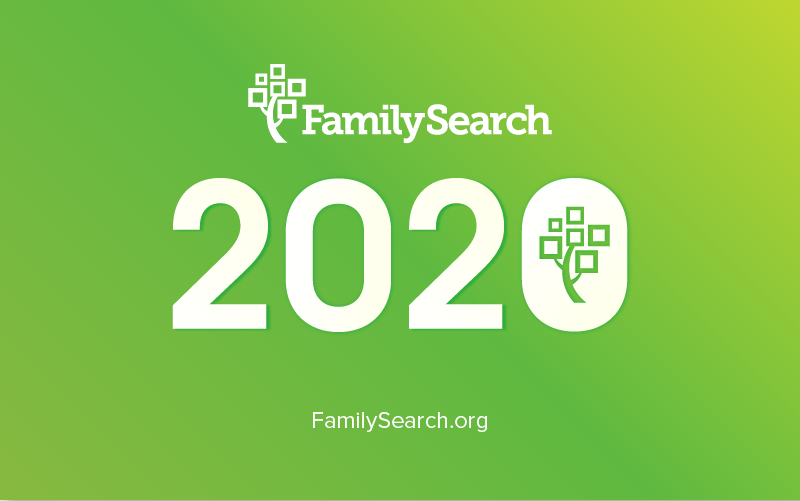
FamilySearch International is dedicated to connecting families across generations by providing more searchable records, interactive discovery experiences, the world’s largest online family tree, online and offline help, and other genealogy resources and tools.
The year 2019 saw incredible advancements in all these areas. Here’s a quick look at what FamilySearch has been up to in 2019.
Searchable Records
- In 2019, FamilySearch added 123.6 million indexed records and over 850 million new images of historical records. You can find other significant statistics in the graphic below.
- In addition to more searchable records and images, FamilySearch provided updates and new features to improve the indexing and record searching experience, including a new similar historical records tool that helps you find additional records that may belong to a person you find in a document. So when you find a family member in a record on FamilySearch.org, FamilySearch can now suggest other records that may include information about the same person.
- FamilySearch introduced an update that allows users to make corrections to names in an index. You can correct names that were indexed incorrectly or that were incorrect on the record itself. Learn more here.
- Using the new Thank a Volunteer feature, you can express appreciation for the thousands of volunteers who make indexed, searchable records possible on FamilySearch.org!

Discovery
At FamilySearch, we strive to provide inspiring, heart-turning discovery experiences. This year, we worked toward that goal in part by organizing major events in three countries to gather genealogy enthusiasts of all levels of skill and experience.
- This year saw another successful RootsTech in Salt Lake City, which a total of 15,156 genealogy enthusiasts and experts attended.
- For the first year ever, a RootsTech conference took place in London, bringing in 9,727 total attendees. There were more than 81,000 online views of the London and Salt Lake City RootsTech conferences combined.
- Mexico also had its own genealogy conference sponsored by FamilySearch, the Expo Genealogía, which successfully brought discovery experiences to hundreds of attendees.
- Along with the many discoveries that FamilySearch users have made on the site (see the below infographic for FamilySearch.org visits), FamilySearch created an online discovery experience center, which you can check out here.

Family Tree Growth
- During 2019, 3.5 million FamilySearch.org users added nearly 47 million people to the FamilySearch Family Tree. Refer to the infographic below for other fascinating statistics about this year’s Family Tree growth.
- FamilySearch also introduced several new features to the Family Tree this year. For example, you can now see how you are related to other users of FamilySearch.org. All you have to do is opt-in, and you can see how you and another person (if he or she has also opted-in) are related.
- In a recent update, FamilySearch provided the ability to document all family relationships, including same-sex relationships. Learn more here.
With each new year, FamilySearch has goals for improving your experience and helping people around the world discover and connect with their families. So what’s new on FamilySearch in 2020? Here’s your sneak peek!
(Read the rest of the article FamilySearch 2019 Year in Review)
What’s Coming in 2020

This year, 2020, FamilySearch will expand its reach by adding more languages and more social capabilities. Some key experiences such as the Family Tree and Memories will also have new and improved functionality.
More Languages
Do you have friends or family members who speak a different language? FamilySearch.org will have support for more languages at the beginning of 2020. The FamilySearch Family Tree, records search, Memories, and other essential site experiences will be made available in the following additional languages:
- Albanian, Bulgarian, Khmer, Czech, Danish, Dutch, Finnish, Hungarian, Indonesian, Mongolian, Norwegian, Polish, Romanian, Samoan, Slovak, Swedish, Thai, Tongan, Vietnamese
- Note: The FamilySearch website and Family Tree app are already available in English, Portuguese, French, Italian, German, Spanish, Russian, Traditional Chinese, Japanese, and Korean.
For most users, the FamilySearch site will automatically open in the language that best matches their browser or device settings. You can also change your language on the FamilySearch website using the language menu in the footer.
Faster Access to New Records and Editable Dates and Places in Indexes
FamilySearch is releasing a new tool for viewing recently digitized record images. This feature will help you more easily find images that aren’t yet indexed (or text searchable), which gives you quicker access to new records. FamilySearch has more than 300 cameras working to preserve records worldwide. With the upcoming Explore Images tool, new record images can be made viewable on the site in a matter of days or weeks, instead of going through months or years of processing.
In addition, dates and places in record indexes will soon be editable on FamilySearch.org. This feature is similar to an update in 2019 that allowed users to edit the name fields in indexed records.
Better Merging
Updates to Latest Changes and a New Contributions Tab
Easier Ways to Find and Sort Memories and Improved “Likes”
Going Social
(Read the Rest off the Article What’s Coming to FamilySearch in 2020)

Trackbacks/Pingbacks